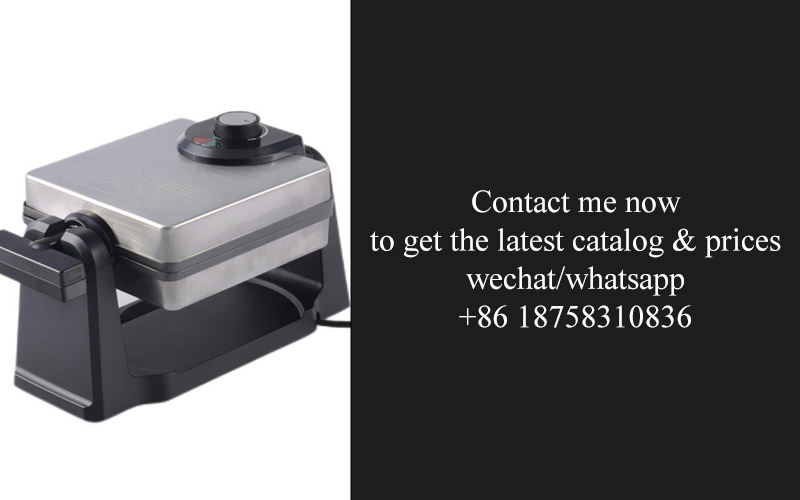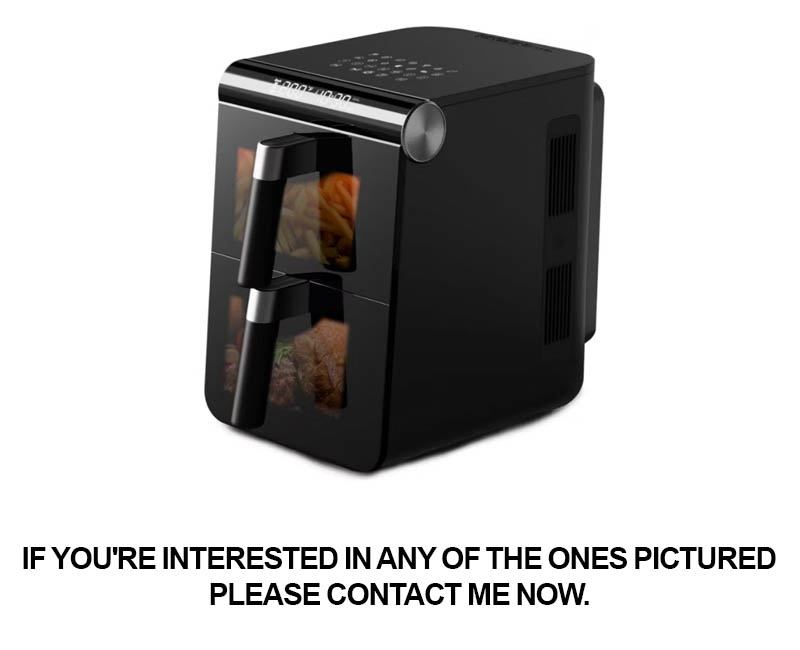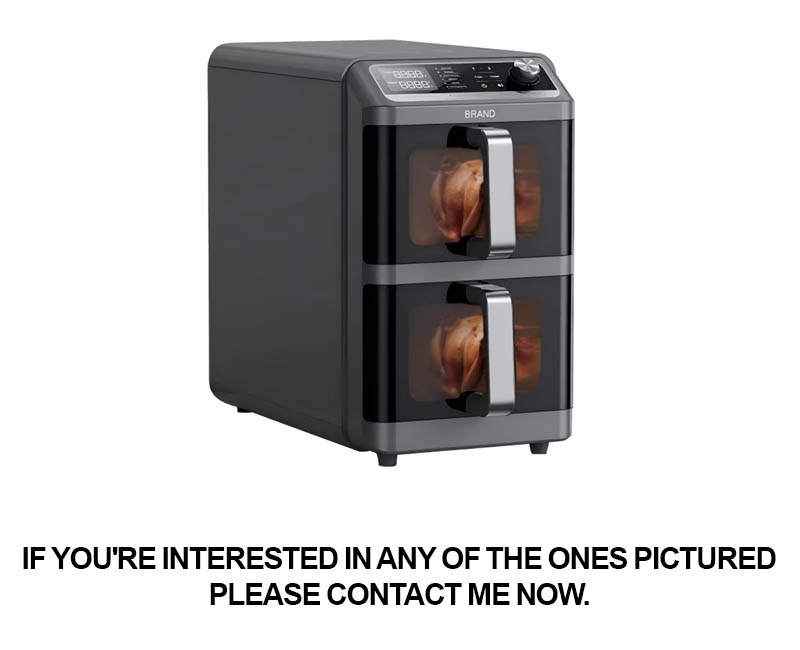Address
304 North Cardinal
St. Dorchester Center, MA 02124
Work Hours
Monday to Friday: 7AM - 7PM
Weekend: 10AM - 5PM
Address
304 North Cardinal
St. Dorchester Center, MA 02124
Work Hours
Monday to Friday: 7AM - 7PM
Weekend: 10AM - 5PM

In the ever-evolving landscape of kitchen appliances, a new star has emerged in the form of restaurant-grade air fryers. These innovative devices are not just redefining home cooking; they are setting a new standard for health, efficiency, and culinary excellence. As we delve into the world of these high-end appliances, it’s clear that the future of home cooking is not just about convenience, but about embracing sustainable and healthy solutions that bring the flavors of professional kitchens into our own homes.
The culinary world has been buzzing with innovation, and one of the latest trends to capture the hearts of home chefs is the rise of restaurant-grade air fryers. These nifty appliances are not just your average kitchen gadgets; they’re revolutionizing the way we cook at home, bringing the flavors of professional kitchens right into our living rooms.
Once the domain of professional chefs, air fryers have now become a staple in many households. But what sets restaurant-grade air fryers apart from their consumer counterparts? These high-end devices are designed to deliver the same quality of cooking that you’d expect in a top-tier restaurant. They’re built to withstand rigorous use, with durable materials and advanced technology that ensures consistent performance.
The allure of restaurant-grade air fryers lies in their ability to mimic the cooking techniques used in high-end establishments. Traditional frying methods can be unhealthy due to the high oil content, but air fryers use a process that circulates hot air around the food, reducing the need for oil while still achieving a crispy texture. This not only makes for healthier meals but also significantly cuts down on the cleanup time.
One of the standout features of these air fryers is their versatility. They can handle a wide range of recipes, from crispy French fries to tender chicken wings, with ease. The even heat distribution ensures that every morsel is cooked to perfection, without the risk of burning or undercooking. This has sparked a new wave of creativity in home cooking, as people experiment with new recipes and flavors that were once only available in restaurants.
The market for these high-end air fryers is growing rapidly, driven by health-conscious consumers and the increasing popularity of home entertaining. As people look for ways to host social gatherings without compromising on the quality of the food, restaurant-grade air fryers have become the go-to choice. They offer the convenience of cooking large quantities of food quickly and efficiently, making them ideal for hosting dinner parties or family gatherings.
The design of these air fryers is also a testament to the latest in kitchen appliance technology. With sleek, modern aesthetics and user-friendly interfaces, they seamlessly blend into any kitchen setting. The digital controls and programmable settings allow for precise temperature and time management, ensuring that every dish is cooked exactly as desired.
Moreover, the environmental benefits of restaurant-grade air fryers cannot be overlooked. By reducing the amount of oil used in cooking, these appliances contribute to a more sustainable lifestyle. This is particularly appealing to the eco-conscious consumer who is looking for ways to reduce their carbon footprint.
Behind the scenes, the factories that produce these high-end air fryers are at the forefront of innovation. They employ cutting-edge manufacturing processes to create appliances that are not only durable but also energy-efficient. The attention to detail in these factories is remarkable, with each component meticulously inspected to ensure the highest quality standards.
In the realm of customer satisfaction, restaurant-grade air fryers have a clear advantage. They are backed by robust warranties and customer support, giving buyers peace of mind that they are investing in a product that will last. The positive reviews and testimonials from satisfied customers are a testament to the reliability and performance of these appliances.
As the demand for restaurant-grade air fryers continues to soar, the industry is responding with a plethora of new models and features. Some air fryers now come with additional functions, such as dehydrating and roasting, expanding their capabilities beyond the traditional frying process. This continuous evolution is a testament to the dynamic nature of the kitchen appliance market.
In conclusion, the rise of restaurant-grade air fryers is a game-changer for home cooking. They offer a unique blend of health, convenience, and innovation that is hard to resist. As these appliances become more accessible and their benefits more widely recognized, it’s clear that they are here to stay, transforming the way we cook and enjoy our meals at home.

The European and American kitchen appliance industry has seen a remarkable transformation over the years, driven by evolving consumer preferences, technological advancements, and changing market dynamics. Understanding these dynamics is crucial for anyone looking to navigate the competitive landscape of this sector.
Consumer demand for convenience and efficiency has surged, leading to a rise in smart kitchen appliances that offer both functionality and connectivity. Smart ovens, refrigerators with built-in Wi-Fi, and dishwashers that can be controlled via smartphone apps are becoming increasingly popular, reflecting a shift towards automation and ease of use.
In Europe, the market is characterized by stringent regulations and a strong emphasis on energy efficiency. The European Union’s Energy Labeling Directive has significantly influenced the design and production of kitchen appliances, pushing manufacturers to innovate and develop eco-friendly solutions. This has led to a surge in demand for appliances with high energy ratings, such as A++ and A+++, which not only save energy but also reduce long-term operating costs for consumers.
The American market, on the other hand, is known for its diverse consumer base and a preference for larger, more powerful appliances. American consumers tend to value performance over energy efficiency, which is evident in the popularity of high-capacity dishwashers and powerful countertop mixers. The U.S. also sees a significant interest in specialty appliances, such as wine coolers and espresso machines, which cater to niche markets and reflect the growing importance of lifestyle and personalization in kitchen appliance purchases.
Another key dynamic in both regions is the growing importance of health and wellness. Consumers are increasingly seeking appliances that can help them prepare healthier meals, such as air fryers and slow cookers. These appliances offer healthier cooking options compared to traditional frying and boiling methods, and they are becoming more common in European and American households.
The rise of e-commerce has also reshaped the kitchen appliance industry. Online sales platforms have expanded the reach of manufacturers, allowing them to tap into new markets and demographics. Consumers now have access to a wider variety of products at competitive prices, and the convenience of shopping from home has further accelerated the growth of online sales.
Branding and marketing strategies play a pivotal role in the European and American kitchen appliance industry. Brands that can effectively communicate their value proposition, whether it’s through innovative design, premium materials, or a commitment to sustainability, are more likely to capture consumer attention and loyalty. Collaborations with celebrity chefs and influencers have become a common tactic to enhance brand visibility and credibility.
Moreover, the industry is witnessing a trend towards modular and customizable appliances. Consumers are looking for products that can be tailored to their specific needs and preferences, whether it’s through interchangeable parts or the ability to upgrade certain features. This trend is driven by the desire for personalization and the recognition that not all kitchens are created equal.
Lastly, the integration of kitchen appliances with home automation systems is gaining traction. Smart home technology is becoming more accessible, and consumers are beginning to appreciate the benefits of having their kitchen appliances connected to their overall home automation ecosystem. This integration not only adds convenience but also opens up new possibilities for energy management and efficiency.
In conclusion, the European and American kitchen appliance industry is a complex and dynamic landscape. It is shaped by a variety of factors, including consumer preferences, regulatory requirements, technological advancements, and the evolving retail landscape. By understanding these dynamics, manufacturers and retailers can better position themselves to meet the needs of today’s consumers and capitalize on the opportunities that lie ahead.

The air fryer market has been heating up, but it’s not just the traditional models that are capturing attention. Innovators in the European and American kitchen appliance industry are pushing the boundaries with novel concepts that are redefining what it means to air fry. From smart technology to eco-friendly designs, here’s a glimpse into the landscape of these groundbreaking ideas.
Smart ConnectivityOne of the most notable shifts in air fryer innovation is the integration of smart technology. Users now expect their kitchen appliances to be connected to their lives, and air fryers are no exception. Smart air fryers equipped with Wi-Fi capabilities allow for remote monitoring and control, enabling users to start or stop cooking from anywhere in their home. Apps that sync with these fryers provide detailed cooking times, temperatures, and even recipe recommendations, making the cooking experience more intuitive and personalized.
Health and Wellness FocusWith a growing awareness of health and wellness, the air fryer landscape is being reshaped to cater to these demands. New models are being developed with healthier oil options, some using a minimal amount of oil to achieve crispiness. There are even fryers that incorporate steam technology, allowing for the preparation of foods with less oil and more moisture, which can lead to more tender and juicy results. These health-conscious innovations are appealing to a market that seeks low-fat alternatives without sacrificing taste.
Design and FunctionalityAesthetics and ease of use are not being overlooked in the pursuit of innovation. Air fryer designers are creating units that are sleek, modern, and stylish, blending seamlessly into kitchen decor. Touchscreen interfaces and intuitive controls make the cooking process a breeze, while the inclusion of additional functions such as dehydrating and roasting expands the versatility of these appliances. Some models also feature easy-to-clean components and odor-absorbing filters, which is a major plus for busy home cooks.
Eco-Friendly MaterialsThe sustainability movement is influencing the kitchen appliance industry, and air fryers are not immune. Companies are exploring eco-friendly materials for their air fryers, from recyclable plastics to stainless steel, which not only reduces environmental impact but also enhances the longevity of the appliance. Moreover, the energy-efficient design of these devices ensures that they use less electricity, contributing to a greener home and lower utility bills.
Customization and PersonalizationCustomization has become a key driver in the kitchen appliance sector, and air fryers are embracing this trend. Some fryers come with interchangeable baskets and attachments, allowing users to prepare a wide variety of dishes, from crispy fries to delicate cakes. The ability to customize cooking cycles and temperatures further personalizes the experience, giving users full control over their cooking outcomes.
Smart Cooking AssistanceTechnology is also being used to assist with the cooking process. AI-driven sensors and cameras are being integrated into air fryers to provide real-time feedback on cooking conditions. This can help users achieve the perfect level of crispiness without overcooking their food. Such smart features not only simplify cooking but also reduce waste, as users can ensure that each dish is cooked to perfection.
Interactive and EducationalInteractive elements are becoming a staple in kitchen appliances. Some air fryers are now equipped with built-in cooking guides and educational content that help users learn new recipes and cooking techniques. This interactivity makes the appliance not just a cooking tool but also a learning device, appealing to both novices and seasoned chefs alike.
In conclusion, the air fryer landscape is undergoing a transformation, driven by innovative concepts that aim to enhance the cooking experience, promote health and sustainability, and provide users with more control and convenience. As the market continues to evolve, it’s exciting to think about the new possibilities that will emerge in the world of air frying.

In the ever-evolving landscape of the kitchen appliance industry, staying abreast of the latest trends and conducting thorough data analysis is crucial for businesses looking to innovate and succeed. Here’s a glimpse into the current trends and the data that’s shaping the industry:
The surge in health consciousness has spurred a demand for healthier cooking methods. Consumers are increasingly seeking appliances that offer healthier alternatives to traditional frying, leading to a rise in popularity for air fryers. Data from market research firm Statista indicates that the global air fryer market is expected to grow at a compound annual growth rate (CAGR) of 6.5% from 2021 to 2026.
Smart technology integration is becoming a cornerstone in kitchen appliances. The ability to connect appliances to smartphones and home automation systems is no longer a luxury but a necessity. According to a report by Grand View Research, the smart kitchen appliances market is projected to reach a value of $14.8 billion by 2025, driven by the convenience and efficiency that smart features offer.
Energy efficiency is a key factor in the appliance industry. As environmental concerns grow, manufacturers are focusing on creating energy-saving appliances that not only reduce utility bills but also minimize the carbon footprint. The U.S. Energy Information Administration (EIA) reports that energy-efficient appliances can save consumers an average of $70 to $100 per year on energy costs.
The rise of the minimalist kitchen has influenced design trends. Consumers are looking for sleek, space-saving appliances that blend seamlessly into their kitchen decor. A study by the National Kitchen & Bath Association (NKBA) found that 60% of homeowners prefer a minimalist kitchen design, which is reflected in the demand for compact and stylish appliances.
Customization is becoming more prevalent in the kitchen appliance market. Consumers are not just looking for one-size-fits-all solutions but appliances that can be tailored to their specific needs. Data from the Consumer Electronics Association (CEA) shows that 70% of consumers are interested in customizable features for their appliances.
Sustainability is a growing concern for both manufacturers and consumers. There’s a shift towards eco-friendly materials and manufacturing processes. A report by the Ellen MacArthur Foundation found that the appliance industry has the potential to reduce its carbon footprint by 80% by 2050 through the adoption of circular economy principles.
The integration of health and wellness features into kitchen appliances is on the rise. From air fryers that offer pre-programmed healthy recipes to refrigerators that track nutritional content, there’s a trend towards appliances that promote a healthier lifestyle. A survey by the American Society of Health System Pharmacists found that 75% of consumers are interested in health and wellness features in their kitchen appliances.
The rise of meal kits and home delivery services has influenced the way consumers think about their kitchen appliances. There’s an increased need for multi-functional appliances that can handle a variety of cooking tasks, from cooking to cleaning. A report by the Food Marketing Institute (FMI) indicates that the meal kit market is expected to grow by 8% annually through 2023.
Lastly, the importance of user experience cannot be overstated. Consumers are looking for appliances that are intuitive, easy to use, and provide a seamless cooking experience. A study by the International Journal of Consumer Studies found that user experience is the most significant factor in the purchase decision for kitchen appliances.
In conclusion, the kitchen appliance industry is being shaped by a combination of health consciousness, smart technology, energy efficiency, design trends, customization, sustainability, health and wellness features, meal kit influence, and user experience. By understanding these trends and analyzing the data, manufacturers can stay ahead of the curve and meet the evolving needs of consumers.

In the ever-evolving landscape of kitchen appliances, restaurant-grade air fryers have emerged as the new standard, offering a blend of convenience, health benefits, and culinary versatility. Here’s why these advanced appliances are becoming a must-have in modern kitchens.
The Precision of Professional CookingRestaurant-grade air fryers are designed to mimic the cooking techniques used in professional kitchens. With their precise temperature control and rapid air circulation, these appliances ensure that food is cooked to perfection. Whether it’s crispy French fries or golden-brown chicken, the consistent results are hard to achieve with traditional cooking methods, making restaurant-grade air fryers a game-changer for home chefs.
Healthier Cooking OptionsOne of the most compelling reasons for the rise of restaurant-grade air fryers is their health benefits. Traditional frying methods often involve deep-fat cooking, which can lead to high levels of unhealthy fats and calories. In contrast, air frying uses a fraction of the oil, significantly reducing the calorie count and fat content of fried foods. This healthier alternative is a win for those looking to maintain a balanced diet without sacrificing taste.
Culinary VersatilityThe versatility of restaurant-grade air fryers is unmatched. These appliances can handle a wide range of cooking tasks, from baking to roasting and even dehydrating. This means you can prepare everything from crispy onion rings to juicy roasted vegetables with the same appliance. The ability to switch between different cooking modes makes these air fryers a versatile tool for any kitchen.
Energy EfficiencyIn an era where sustainability is a growing concern, restaurant-grade air fryers shine. These appliances are far more energy-efficient than traditional ovens and deep fryers. They heat up quickly and maintain a consistent temperature, reducing energy consumption and lowering utility bills. For environmentally conscious consumers, this is a significant factor in choosing kitchen appliances.
Cooking Speed and ConvenienceTime is a precious commodity, and restaurant-grade air fryers recognize this. They cook food at a much faster rate than traditional methods, often reducing cooking times by up to 75%. This means you can enjoy your favorite fried foods without the wait. The convenience of quick cooking times is especially appealing for busy families and individuals who value efficiency in their daily routines.
Customizable Cooking SettingsModern restaurant-grade air fryers come with a variety of customizable settings, allowing users to tailor the cooking process to their specific needs. From temperature control to cooking time, these appliances offer precise adjustments that ensure the best possible outcome. This level of control is particularly important for those who enjoy experimenting with recipes and want to achieve precise results.
Durability and QualityBuilt to withstand the demands of professional kitchens, restaurant-grade air fryers are constructed with high-quality materials. They are designed to last, with sturdy construction and reliable performance. This durability means that these appliances can withstand daily use without compromising on quality, making them a wise investment for any kitchen.
Innovation in DesignThe design of restaurant-grade air fryers has also evolved to meet the needs of modern consumers. Many models now feature sleek, space-saving designs that are easy to clean and maintain. The inclusion of features like digital displays and intuitive interfaces adds to the user-friendly aspect, making these appliances accessible to cooks of all skill levels.
Market Demand and Consumer TrendsThe market demand for restaurant-grade air fryers is on the rise, driven by consumer trends towards healthier eating and convenience. As more people seek out ways to enjoy their favorite fried foods without the guilt, these appliances are stepping into the spotlight. The data reflects a growing segment of the kitchen appliance market that is focused on innovation and health-conscious cooking solutions.
In conclusion, restaurant-grade air fryers have become the new standard in kitchen appliances due to their precision, health benefits, versatility, energy efficiency, convenience, customizable settings, durability, innovative design, and market demand. As the culinary landscape continues to change, these appliances are poised to remain at the forefront, offering a blend of technology and tradition that appeals to both seasoned chefs and home cooks alike.

In the world of kitchen appliances, the evolution from traditional cooking methods to healthier alternatives has been a significant trend. Restaurant-grade air fryers have emerged as a game-changer, offering not just a healthier option but also a testament to advanced technology and craftsmanship. Let’s delve into why these high-end appliances are setting the new standard.
The precision and quality of materials used in the construction of restaurant-grade air fryers are unmatched. These units are often crafted with stainless steel, ensuring durability and a sleek, professional appearance. The use of high-quality materials not only enhances the longevity of the appliance but also reflects the premium experience users can expect.
These fryers are designed with the latest in heat distribution technology. Unlike their consumer counterparts, which might rely on a single heating element, restaurant-grade models employ multiple heating elements that ensure even cooking and a consistent temperature throughout the basket. This precision is crucial for achieving the perfect texture and flavor in each batch of food.
The capacity of restaurant-grade air fryers is another standout feature. They are engineered to handle larger quantities, making them ideal for commercial kitchens. Whether it’s for a bustling café or a busy restaurant, these appliances can cater to the needs of a crowd without compromising on performance.
Safety features are a cornerstone of these high-end fryers. With automatic shut-off mechanisms, overheat protection, and cool-touch exteriors, they provide peace of mind for both chefs and customers. These features are not just for show; they are essential for preventing accidents and ensuring a safe cooking environment.
Innovation in design doesn’t stop at safety and capacity. Many restaurant-grade air fryers come with adjustable temperature controls and timers, allowing for precise cooking times and temperatures. This level of control is invaluable for chefs who need to replicate dishes with exacting standards, ensuring consistency across all servings.
The energy efficiency of these fryers is also noteworthy. By using hot air to circulate around the food, restaurant-grade air fryers require less oil than traditional fryers, which not only reduces costs but also aligns with the growing demand for healthier, low-fat cooking methods.
The integration of smart technology is another leap forward. Modern restaurant-grade air fryers often come with digital displays and programmable settings, allowing chefs to set up recipes with ease and consistency. This technology not only simplifies the cooking process but also opens up possibilities for new and innovative recipes.
The brand reputation and customer service that accompany these high-end air fryers are also factors that contribute to their status as the new standard. Renowned brands often back their products with comprehensive warranties and excellent customer support, ensuring that chefs can rely on their appliances for years to come.
In terms of maintenance, restaurant-grade air fryers are designed with ease of cleaning in mind. With removable parts and non-stick surfaces, they require minimal effort to keep clean, which is crucial for maintaining hygiene standards in commercial kitchens.
The environmental impact of cooking equipment is also a consideration for many businesses. Restaurant-grade air fryers are often more sustainable than traditional fryers, as they use less oil and consume less energy, reducing the carbon footprint of the kitchen.
Lastly, the versatility of these fryers cannot be overstated. They can be used to prepare a wide range of dishes, from crispy French fries to tender chicken wings, making them a versatile addition to any commercial kitchen.
In conclusion, the rise of restaurant-grade air fryers as the new standard in the kitchen appliance industry is a result of their superior craftsmanship, advanced technology, and the myriad benefits they offer to both chefs and customers. From their robust construction to their smart features, these fryers are setting the bar high for what is expected in high-end kitchen appliances.

The culinary landscape is undergoing a transformation, with restaurant-grade air fryers leading the charge in revolutionizing home cooking. These advanced appliances are not just a trend; they’re a game-changer, offering health-conscious consumers a way to enjoy crispy, golden fried foods without the guilt. Let’s delve into how these high-end air fryers are enhancing the cooking experience at home.
Gone are the days when air fryers were seen as mere kitchen gadgets. Today, they are a staple in professional kitchens, and the latest models are designed to replicate the performance of commercial-grade equipment. At home, this means you can achieve restaurant-quality results with ease.
One of the standout features of restaurant-grade air fryers is their ability to distribute heat evenly across the cooking chamber. This even heat circulation ensures that food is crispy on the outside and tender on the inside, much like you’d find in a professional kitchen. The secret lies in the convection technology, which circulates hot air around the food, creating a crispy outer layer while retaining moisture inside.
The size and capacity of these air fryers are also impressive. They’re designed to handle larger batches of food, making them perfect for families or those who love hosting gatherings. The spacious interior allows for the cooking of multiple items simultaneously, which is a significant upgrade from the smaller, single-portion models of yesteryears.
Moreover, these air fryers are a testament to innovation in design and functionality. Many come with adjustable temperature controls, allowing you to fine-tune the cooking process to perfection. Whether you’re cooking a delicate piece of fish or a hearty chicken thigh, the precise temperature control ensures that your dish is cooked to your liking.
Safety features are another area where restaurant-grade air fryers shine. With built-in timers, auto shut-off functions, and cool-touch exteriors, these appliances prioritize the well-being of users. No more worrying about leaving food cooking unattended or the risk of burns from a hot surface—these features make cooking a safer and more enjoyable experience.
Health enthusiasts will be thrilled to know that restaurant-grade air fryers are not just about taste; they’re also about health. These fryers use significantly less oil compared to traditional deep-frying methods, which can lead to a lower calorie count and a healthier diet. The reduced oil content doesn’t compromise on flavor or texture, making it a win-win situation for those looking to indulge in fried foods without the guilt.
In terms of versatility, restaurant-grade air fryers can do more than just fry. They can bake, roast, and even dehydrate, expanding your culinary possibilities. Whether you’re making crispy French fries, golden onion rings, or even homemade potato chips, these appliances can handle it all. The ability to experiment with different cooking techniques at home is empowering and exciting.
Maintenance is also a breeze with these high-end air fryers. Many models come with non-stick interiors, which means cleaning up after cooking is less of a chore. The removable parts are usually dishwasher safe, further simplifying the cleaning process.
The user experience is also enhanced by the inclusion of intuitive interfaces. Touchscreens and digital displays make it easy to select the desired cooking mode and temperature, ensuring that even those new to air frying can achieve great results.
In the world of home cooking, restaurant-grade air fryers are setting a new standard. They combine the convenience of a traditional fryer with the health benefits of air frying, offering a cooking experience that is both satisfying and guilt-free. As these appliances continue to evolve, we can expect even more innovative features that will make them an indispensable part of any well-equipped kitchen. Whether you’re a seasoned chef or a culinary novice, the enhancement that restaurant-grade air fryers bring to your home cooking is undeniable.

In today’s fast-paced world, the kitchen has become more than just a place to cook; it’s a canvas for culinary creativity and a hub for health-conscious living. As we look towards the future of home cooking, the emphasis is shifting towards sustainable and healthy solutions that not only nourish our bodies but also our planet. Here’s a glimpse into the evolving landscape of home cooking with an eye on sustainability and wellness.
The integration of technology in kitchen appliances has revolutionized the way we prepare meals. Smart ovens, induction cooktops, and now, air fryers, are all part of this tech-driven transformation. These appliances are not just tools; they are enablers of healthier cooking methods that preserve the nutritional value of ingredients while reducing the need for excessive oil.
Sustainable cooking practices are gaining traction, and one of the key players in this movement is the air fryer. By using hot air to circulate around food, these appliances achieve crispy, golden results with minimal oil. This method is not only healthier but also more sustainable, as it consumes less energy than traditional deep-frying.
In the realm of healthy eating, the concept of whole food consumption is becoming increasingly popular. Consumers are seeking out ingredients that are minimally processed and packed with nutrients. Air fryers allow for the preparation of a wide array of foods, from vegetables to meats, all while maintaining the integrity of the whole food. This aligns perfectly with the trend towards clean eating, where the focus is on natural, unrefined foods.
The rise of plant-based diets has also influenced the kitchen’s future. Air fryers are ideal for preparing plant-based proteins, such as tofu and tempeh, as well as a variety of vegetables and legumes. These appliances can mimic the texture of fried foods without the guilt, making it easier for those transitioning to or maintaining a vegetarian or vegan lifestyle.
Moreover, the sustainability of cooking practices is not just about the food itself but also about the energy and water used in preparation. Modern air fryers are designed with energy efficiency in mind, often using up to 80% less oil and 70% less energy than traditional deep-fat fryers. This not only reduces the carbon footprint of our cooking habits but also saves money on energy bills.
The kitchen of the future is also one that is inclusive and accessible. Air fryers, with their ease of use and versatility, cater to a diverse range of cooking skills and preferences. They are perfect for busy professionals looking to prepare quick and healthy meals, as well as for families seeking to make nutritious dishes that everyone can enjoy.
Innovation in air fryer design continues to push the boundaries of what is possible in the kitchen. Features such as programmable settings, non-stick coatings, and even built-in timers are becoming standard, making these appliances more user-friendly and adaptable to different cooking styles. This flexibility is crucial for a sustainable kitchen, where the ability to prepare a wide variety of dishes with minimal waste is key.
The role of the kitchen in the home is also evolving. It’s no longer just a place to cook; it’s a gathering spot for family and friends. Air fryers, with their ability to cook a variety of foods quickly and efficiently, make it easier to host gatherings that are both delicious and eco-friendly. From appetizers to desserts, these appliances can handle it all, ensuring that everyone can enjoy a feast without compromising on health or the environment.
As we move forward, the future of home cooking is bright, filled with opportunities to embrace sustainability and health. The air fryer, with its ability to provide crispy, flavorful results with minimal oil and energy, is a shining example of how technology can enhance our lives while also being mindful of the planet. By adopting sustainable and healthy cooking solutions, we can create a kitchen that is not only a testament to our culinary skills but also a reflection of our commitment to a better world.

The evolution of technology has revolutionized the way we approach cooking at home, and restaurant-grade air fryer factories are at the forefront of this culinary renaissance. These advanced appliances are not just a step up from your average home fryer; they represent a new standard in cooking efficiency, health, and sustainability. Here’s why these factories are shaping the future of home cooking.
In the realm of high-end air fryer manufacturing, precision and innovation are paramount. These factories employ cutting-edge technology to produce air fryers that can withstand the demands of commercial kitchens while being accessible to home chefs. The result is a device that offers the same crisp texture and rich flavors as traditional fried foods, but with a fraction of the oil.
The sustainability aspect of restaurant-grade air fryers cannot be overstated. With the growing awareness of health and environmental concerns, these appliances are a beacon of hope. By using up to 80% less oil than traditional frying methods, they significantly reduce the carbon footprint and contribute to a more eco-friendly lifestyle. It’s a win-win situation for both the planet and the consumer’s waistline.
Home cooking has always been about more than just nourishment; it’s an art form that brings people together. Restaurant-grade air fryers enhance this experience by allowing for more creative and diverse dishes. From crispy, golden French fries to perfectly seasoned chicken wings, these fryers open up a world of possibilities. The ability to experiment with different recipes and cooking times means that every meal can be a new adventure.
One of the standout features of these air fryers is their versatility. They’re not just for frying; they can also bake, roast, and even dehydrate. This means you can use a single appliance to prepare a wide array of meals, from breakfast to dessert. The convenience of having multiple cooking functions in one device is hard to beat, especially for busy families or those looking to simplify their kitchen routine.
Safety is another critical factor that restaurant-grade air fryer factories prioritize. These appliances are designed with the latest safety features, including automatic shut-offs, non-toxic materials, and cool-touch exteriors. The peace of mind that comes with knowing your family is safe while cooking is invaluable.
The rise of health-conscious consumers has also played a significant role in the popularity of restaurant-grade air fryers. As people seek out healthier alternatives to deep-frying, these air fryers provide a guilt-free way to enjoy their favorite fried foods. The ability to control the cooking temperature and time ensures that the food is crispy on the outside and tender on the inside without the need for excessive oil.
In terms of design, restaurant-grade air fryers have come a long way from the simple, utilitarian models of the past. Modern designs are sleek, stylish, and can be a statement piece in any kitchen. The integration of smart technology allows for remote monitoring and control, making it easy to manage cooking tasks even when you’re not at home.
The global kitchen appliance market is witnessing a shift towards healthier, more sustainable cooking solutions. Restaurant-grade air fryer factories are leading this charge by producing high-quality, energy-efficient appliances that cater to the demands of today’s consumer. The data reflects a growing trend of sales in these air fryers, with an increasing number of consumers choosing them over traditional cooking methods.
As we look to the future, it’s clear that restaurant-grade air fryers are more than just a passing fad. They represent a new era of cooking that combines health, sustainability, and convenience. The factories that produce these appliances are investing in research and development to push the boundaries of what’s possible, ensuring that the future of home cooking is bright and flavorful.
In conclusion, the rise of restaurant-grade air fryer factories signifies a pivotal moment in the evolution of home cooking. These factories are not just manufacturing products; they are crafting solutions that address the changing needs and values of society. As we continue to embrace the future, these high-end air fryers will undoubtedly play a central role in shaping how we cook, eat, and live.